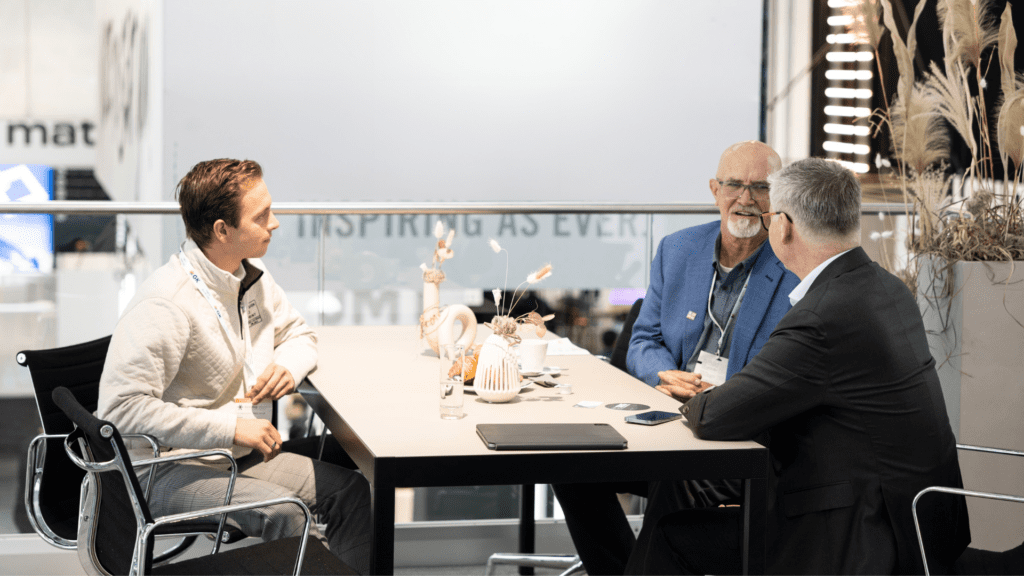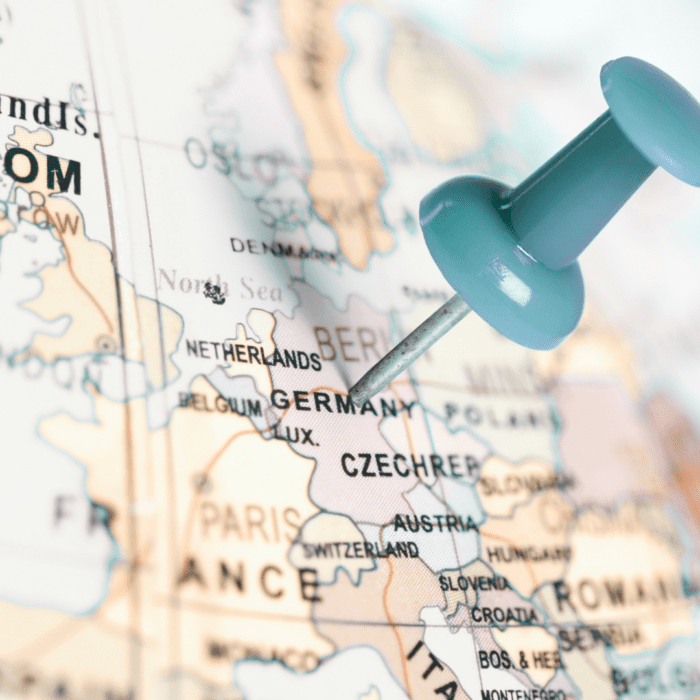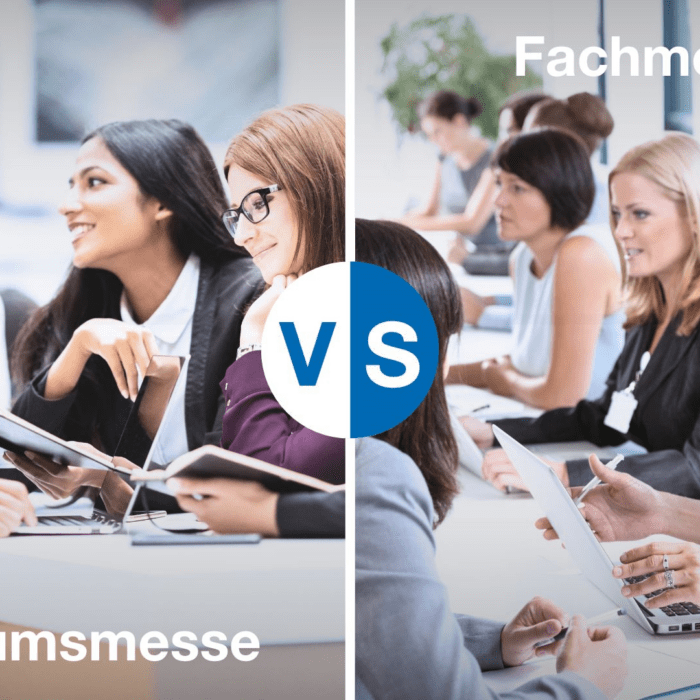Do you know it? You have designed and built the exhibition stand of your dreams, the stand in the exhibition hall could hardly be better positioned and the first visitors are already streaming into your exhibition hall. But for some reason, despite the excellent conditions, the trade fair is not a success. Only a few guests linger at your stand and at the end of the trade fair there is still plenty of room for improvement in the number of leads. Then you may have a communication problem. Successful trade fair communication is not an easy discipline and requires a great deal of tact and sensitivity. In this blog you will find helpful tips on how to find the right words and strike the right tone in the future.
Confident communication: the be-all and end-all of your trade fair appearance
Communication is the key to success, especially in the trade fair context. The way in which you present your offers and address your target groups has a significant influence on whether interested parties become customers.
The basis of a successful communication strategy lies in clearly defining your own goals and target groups: Who exactly do we want to address? Where should the counselling session lead and what is the ideal outcome? Based on this, you can now plan how the communication at your trade fair stand should look in practice. Here are some tips on how to do this.
Select trade fair staff correctly
One sticking point is naturally the human factor – the people who staff your stand. Whether these are employees of your company or professional temporary staff is the first decision that needs to be made. Above all, the focus here should be on the communication skills of the stand personnel. If necessary, you can support them in advance with professional coaching so that consultations run smoothly from the very first sentence.


The perfect conversation starter
Speaking of address: this is a fine art that needs to be learnt. Good opening tactics are particularly important at busy exhibition centres, where visitors move quickly from A to B or let themselves be carried away by the crowd. In this way, you can encourage people to stop or keep interested parties at your stand. This works particularly well with open questions, invitations to interact or small giveaways that arouse interest and can be used to start a conversation.
Ask questions, listen attentively
Showing genuine interest in the person you are talking to and asking appropriate questions is also worth its weight in gold during the conversation. On the one hand, you learn more about the level of knowledge and the needs of your counterpart and can guide the consultation accordingly. On the other hand, you arouse positive emotions and ensure that prospective customers leave your stand with a good feeling.


Do not cause stress
You should definitely avoid forcing a successful conclusion prematurely. If your potential customers feel under too much pressure, they will quickly leave. Give visitors enough time to discuss and think about your product and service. Keep an appropriate distance and be available to help when the audience is ready to talk.
Elegant finish
The end of the conversation is almost as important as the beginning. Ideally, interested parties have left their contact details for a follow-up. Regardless of this, a good degree can still have a big impact afterwards. Accept in a friendly manner if the other person wants to end the conversation. If possible, offer information material and refer to your online presence. If you leave the other person with a good feeling, you can also turn an apparent failure into a lead.


Recognising promising leads
Being able to read the other person is in no way inferior to a good opening and closing of the conversation. In the interests of efficiency and in order to maximise the added value of the trade fair for all parties, a discussion without any visible prospect of success can and should be ended politely. The time freed up can potentially be put to better use with the next interested party. In this respect, it is advisable, especially for international events, to strategically incorporate the respective cultural preferences and communicative habits of different guests in advance.
Effective trade fair follow-up
After the trade fair, the communication work is far from over – now it’s time to convert the trade fair visitors into customers. In this article, you can read about the best time to follow up, which follow-up measures are particularly effective and how you can make the most of the multiple contact data you have collected.


Conclusion: Trade fair communication is complex
There is a lot to consider when communicating at trade fairs, from setting objectives to the start of the dialogue to the successful conclusion and appropriate follow-up. Invest enough time and resources in your project in advance to perfect this aspect of your trade fair appearance. Professional coaching or role-playing in the trade fair team is the ideal preparation to ensure that your stand has convincing content on the agenda instead of empty words.
Are you looking for a partner to help you plan the ideal stage for your communication success? We are specialists in exhibition stand construction solutions all over the world – and you only a short contact enquiry away from future trade fair success.





